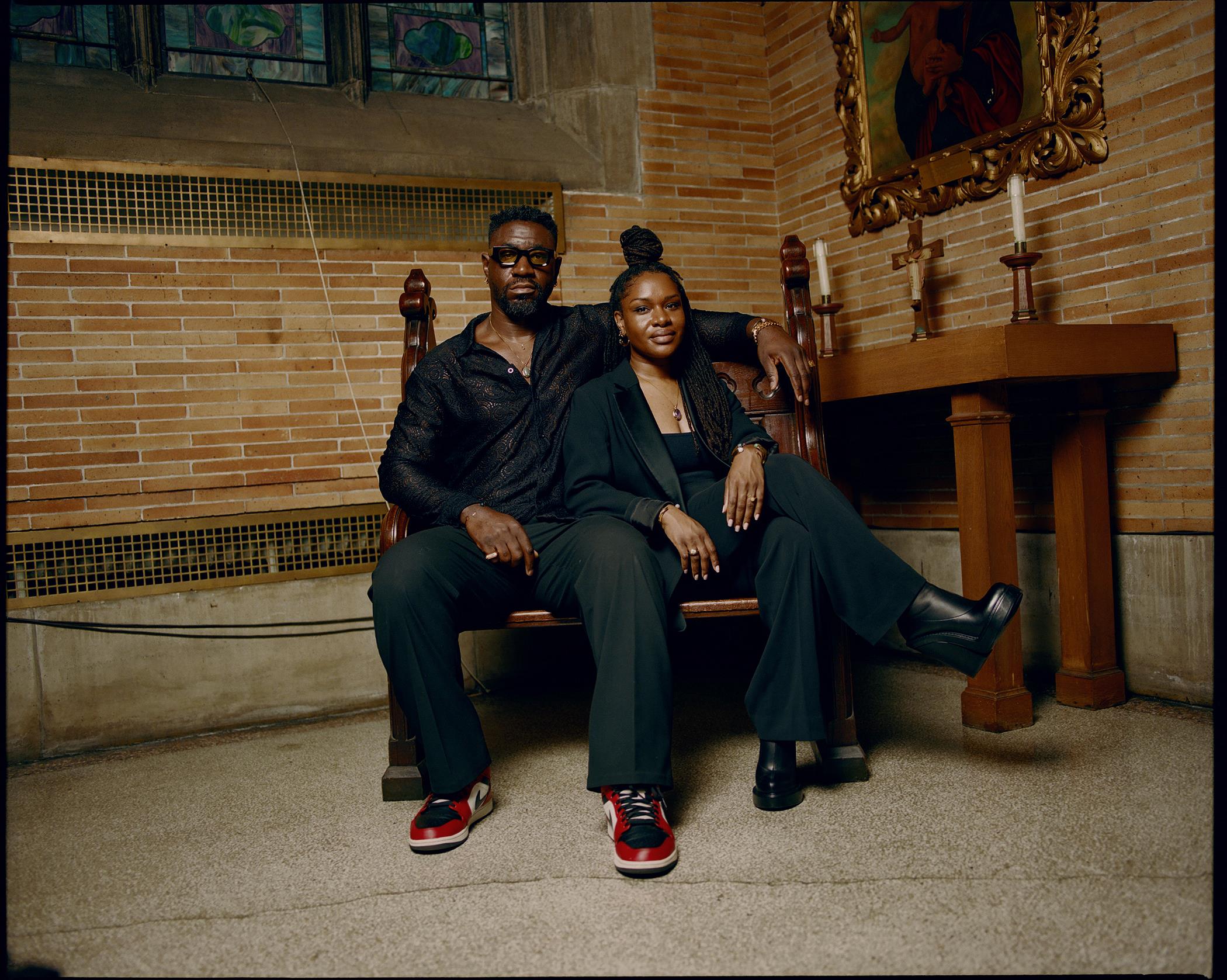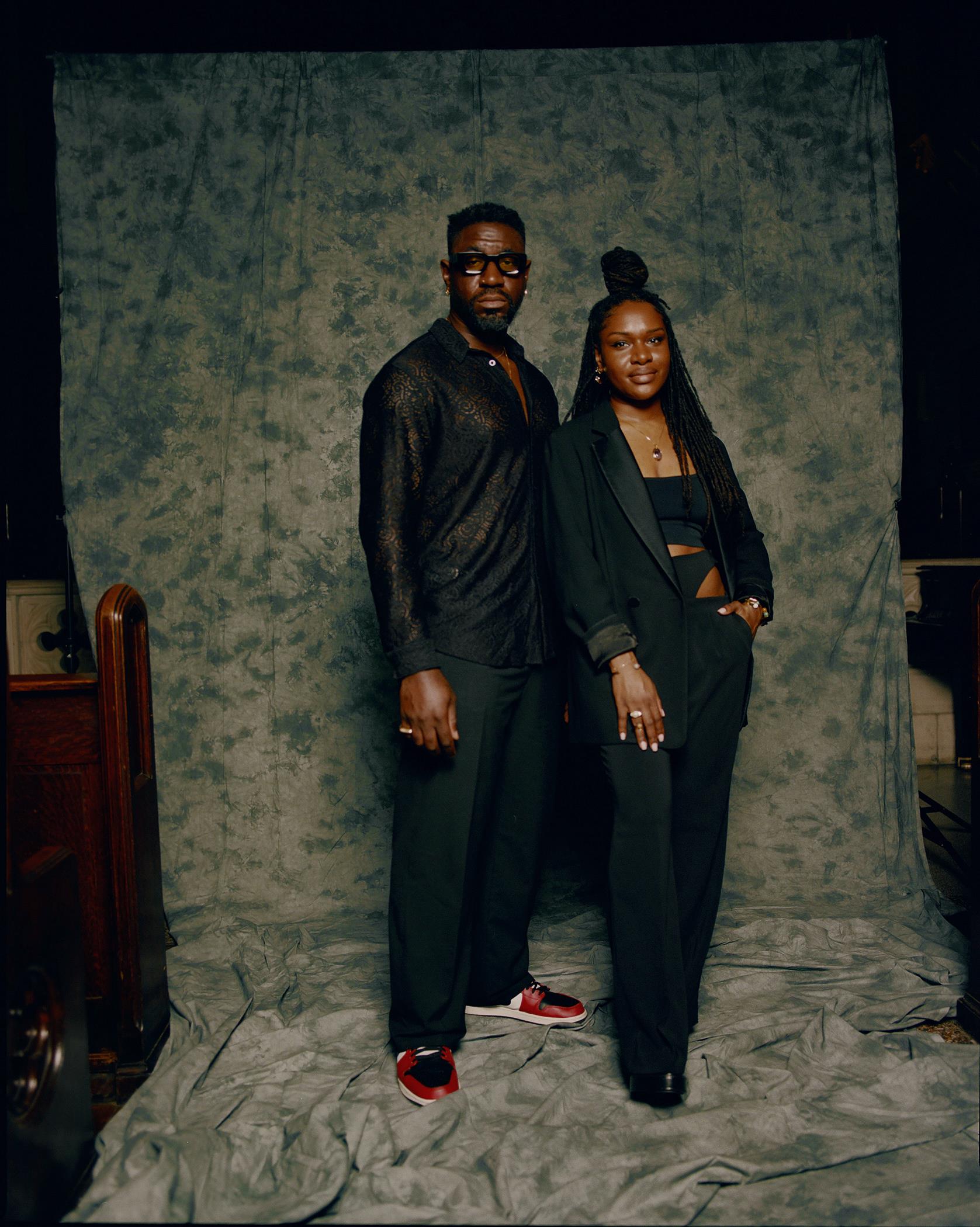Your Story Told Your Way: Kristin and Kofi Essel
February 21, 2023
Melquan Ganzy


Kofi and Kristin Essel.
After connecting as design students, Kofi and Kristin Essel joined forces to build a collaborative vision for their gender-neutral jewelry brand, Third Crown. The couple balances inspiration from their African and Caribbean heritages and experiences from Black culture in America to develop fresh perspectives for their brand. Not only do Kofi and Kristin share Black love, they share their jewelry: one day Kristin may wear her BIZOTE ring, and the next day Kofi may be sporting it in a new look.
What significance of your bond has allowed you to form one voice for Third Crown?
Kofi: “Kristin and I met when we were both students in design school. Our connection with one another drove us into a relationship. In the beginning of our relationship, our creative aesthetic matched – we would wear the same kinds of clothes or exchange clothes. As two innovators, our goal is always to create, so why not create with the person that you are connected with?
As designers and partners, we draw a lot of inspiration from where we come from. I am originally West African and Kristin is of Caribbean descent. We live in America, so we experience Black culture here, and we live and breathe different cultures through the African Diaspora. We have been able to infuse these cultures into what we create and how we design our collections.
I would say our triangle beveling is the driving force of Third Crown. The triangle’s base points upwards andsymbolizes our progression. The triangle represents the idea of moving forward and aspiring a sense of newness, which resonates with our brand. The triangle is the emblem of our logo and it continues to drive Third Crown forward. This is the DNA of our brand.”
Does fashion often mirror how you feel within?
Kristin: “We push to keep our collections very cohesive. We want our customers who bought our first collection to see our future collections and know, ‘That is Third Crown’. When we design a new collection, we take inspiration and references from our previous collections.
We bring a new life into each collection. It is how we are able to interpret multiple collections with a variety of styles. I believe our jewelry inspires people to wear our jewelry in pairs. It also inspires people to share your jewelry like Kofi and I, we share our jewelry all the time. I will wear the Marcy stud on Tuesday, and then he will wear it on Thursday.”
Kofi: “I am actually wearing her earrings right now. (laugh)”
Kristin: “Yeah, exactly! So, Third Crown inspires people to share their jewelry with their loved one, best friend, and even their coworkers.”

How do you find a balance between being inspired by roots and creating fresh perspectives from your experiences in America?
Kofi: “I am a West African, it is my parents heritage. I was born in England but I was also raised in Ghana, where my parents are originally from. I moved to the U.S. as a teenager and experienced a multitude of cultures within my upbringing. I have gained multiple perspectives from these spaces throughout my life. I try not to take direct inspiration from my heritage. Instead, I find inspiration in architectural designs that I remember growing up around.
The arch of the Arc bangle is inspired by the Arc De Triomphe in Paris. We have visited Ghana, Accra, and other places, which is why we are able to develop unique ideas and fresh perspectives. Our African, Caribbean, and Black American identities are fused in our jewelry. When I take a closer look into the Third Crown, I am reminded of what my grandmother would wear. I am also reminded of how the Royal families dressed and how Chiefs would wear stacked rings and bracelets in African villages.”
How confident are you all to embrace and connect with your heritages of the African Diaspora?
Kofi: “I have always been connected to my parents, aunts, uncles, and grandparents, who were all born in a foreign country. I have always been around my African lineage. When I go home, I speak their native language, I understand a lot of the languages that are spoken as well. So, we are confident in our everyday lives. When Kristin came to Accra, she felt like it had a lot of similarities to Jamaica. I believe she felt at home, the people treated her as if she was from that country. We went to the market and everyone embraced her. She and I enjoyed being in The Motherland to experience African culture, our heritage.”
Kristin: “Our latest collection is called the Bizote Collection and bizote means beveled in Haitian Creole, which is embedded in our design detail. We always try to connect to the African Diaspora when naming our connection and using cultural references in each of the pieces.”
If you had a chance to collaborate with a powerful world leader or creative artist from the past, who would you align with?
Kristin: “I would say Nelson Mandela and Winnie Mandela; they were a pair. We all know of Nelson Mandela but I know Winnie was there along his side.”
Kofi: “Nelson Mandela was pretty fashionable. I am a big Prince fan but I never really thought of him in the light of what our brand is right now. A lot of my inspiration comes from architecture, so I look at building designs. I love the artistry of past musicians and I admire the viewpoints of plenty of our Black historical leaders. I have never thought about the Third Crown in this way. Now I am going to pay more attention and see how I can pull inspiration from people from the past.”
Where did you all find the power to amplify your impact voices through Third Crown?
Kofi: “I believe our power comes from being creative people. When we are designing, the goal is to tell a story; it is not to commercialize our craft. Even if Third Crown jewelry never made sales, we would still design jewelry. It is a necessity for us to create and it has always been. Our story is finding each other in a common space, building Third Crown, and then continuing to design day to day. To create is our light, Third Crown is amplified by our voices.”
Your Your Story Told Your Way Black History Month series celebrates fashion leaders and creators via curated conversations that welcome authenticity and honor brand identities. These conversations steer clear of trauma to encourage fashion leaders to also be a beacon of light.
Photographed by Kendall Bessent at the historic St. Philip’s Episcopal Church, the first parish for Black people, architected by Vertner Woodson Tandy.